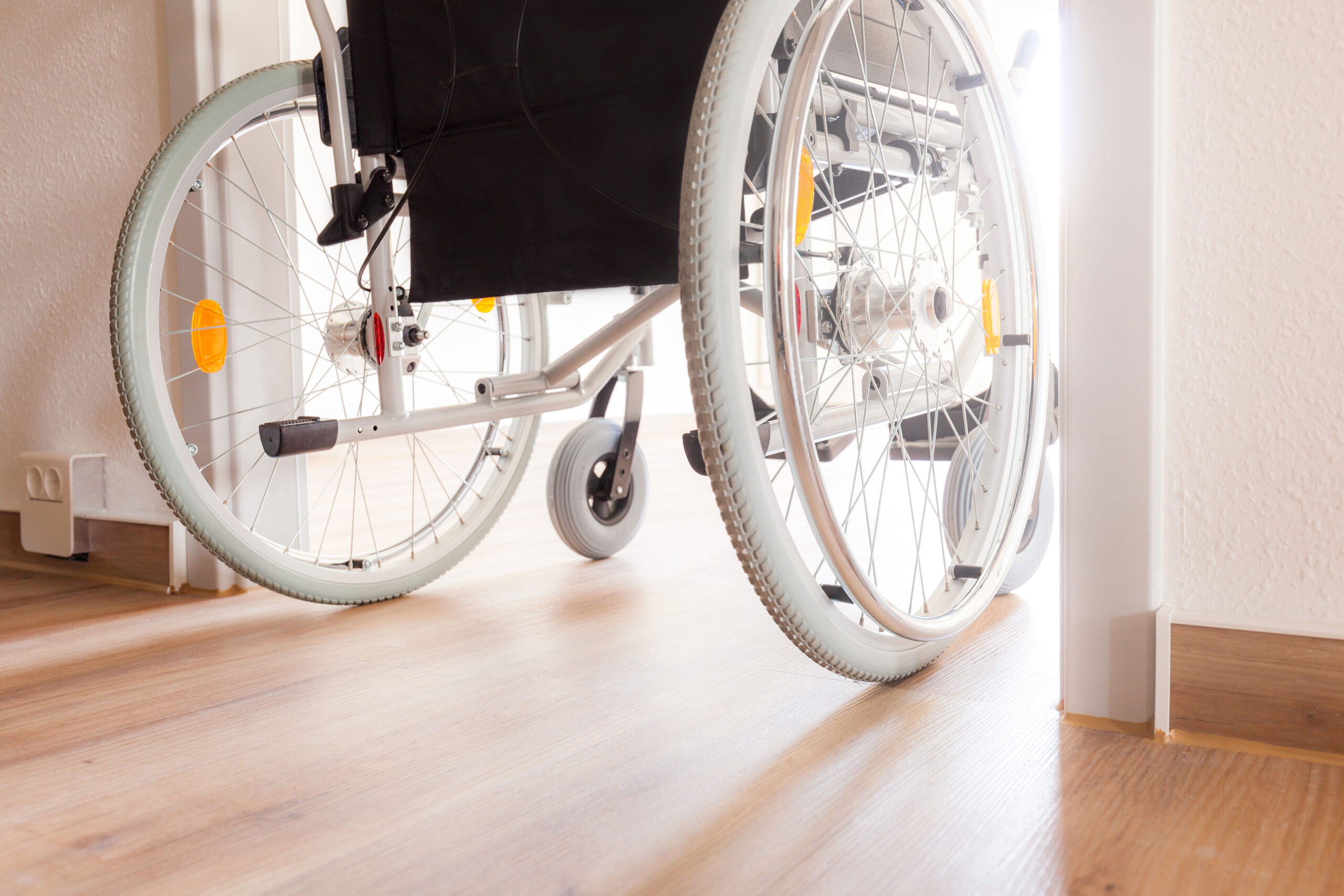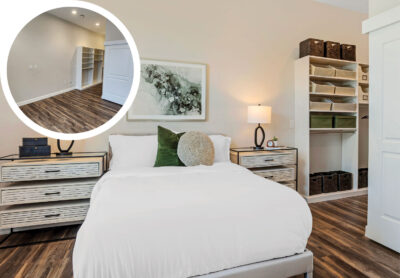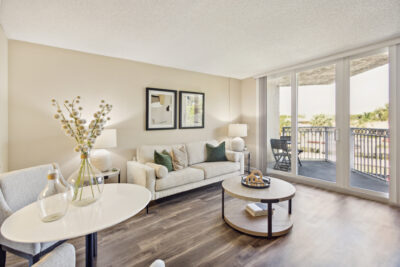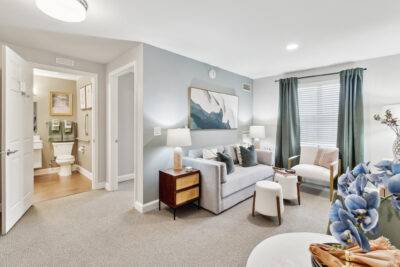Whether you are a community employee, regional director, or an adult child, you can use this post to help inform purchases when designing and furnishing a senior living apartment. In this blog I will discuss Model55’s approach to furnished senior living apartments and common spaces. Here’s what you will read about:
- Best Safety Practices for Furnishing Senior Living Apartments & Common Spaces
- State Required Furniture Mandates for Senior Housing
- Practical Advice for Memory Care Design
If you are reading this blog because you need to furnish a senior living apartment or common space, consider Model55’s turn-key solutions to help you design, purchase, and install beautiful, safe apartments. For more information you can shop our senior resident rooms online, or download our apartment design pricing and info sheet by submitting your name and email below.
Safety and Design in Senior Living
Whether you are designing and furnishing a model, respite, or resident room, it’s important to keep safety in mind. Fortunately there are so many ways to create beautiful and fully functional senior apartments without sacrificing safety. Here are Model55’s top design and safety priorities for senior living:
The 3-Foot Rule
Whenever we create our floor plans for an apartment within a senior living community, one of the top principles our designers have in-mind is the 3-foot rule. By always designing for 3 feet of space between all accessible areas (i.e. a dresser and bed), you will ensure there is adequate space for the safety of residents and tour takers.
Appropriate space is important for ensuring that your residents won’t be banging into hard corners, or tripping on couch legs as they are trying to access certain areas of their living quarters. It is also important to design for wheelchair and walker accessibility due to the potential physical limitations of your residents.

Seating
One thing you don’t want to do is get caught up in the aesthetic appeal of accent seating before you consider the functionality! Dining chairs, loveseats, couches, patio, and accent seating should all be sourced with great care. In addition to sourcing stain resistant, comfortable fabric, you should also pay attention to whether the chairs have arms, and are firm when sat on. When it comes to selecting apartment or common area seating, it’s important that you prioritize function. Here are the elements to consider:
- Does the seating have arms?
- Does the seating have a firm back?
- Is the seating a decent height?
- Is the cushion firm enough that the sitter won’t sink into the seating?
- Is the seating easy to get in and out of?
- Is the fabric stain resistant?
- Is the fabric fireproof?
The last three bullets listed above are especially notable for common areas throughout your community. In addition, our designers recommend selecting antimicrobial fabrics if you can – especially for senior living common spaces.

Lighting
Another important design element for the safety of your residents is lighting. As apartment designers, Model55 typically works with a healthcare design partner for sourcing fixture lighting. However, accent lighting in both senior living apartments and common areas is important for the safety of your residents. Ensuring that floor lamps are placed where they can be both functional and visually pleasing is crucial for a successful design.
Both table and floor lamps should be arranged so that they are easy to access and don’t create tripping hazards. Additionally, accent lighting should be considered in or around zones where residents are most likely to fall. For example, shining extra light on the lip between the kitchen tile and apartment carpeting could prevent a dangerous fall.
State Mandated Senior Living Furniture
Several states throughout the country, such as NY and PA, require that apartment furniture within senior communities meet specific healthcare requirements. As a rule of thumb, meeting such requirements, regardless of whether they are mandatory in your senior community or not, is a great idea when designing for resident rooms or model apartments in communities with assisted living or continuing care facilities.
For a better idea of furniture collections that meet state mandated requirements, check out our online shop of senior-friendly resident room collections.
Shop Model55 Collections
Explore our senior-friendly furniture collections for design inspiration.
Shop Online
Memory Care Design
Memory and dementia care is a realm of senior living design that requires an additional level of attention to detail. Because residents living in these apartments have both physical and mindful limitations, there are certain criteria that should be followed in each and every space they occupy. Below are pieces of advice from our designers to consider when sourcing furniture for a memory care model or resident unit:

Art and Wall Fixtures
Art and wall fixtures are important aspects of memory care design. When our designers source wall art, we look for neutral pieces that make the color stories of our designs more cohesive. Additionally, we use art elements that tie in the story of a community’s location, or something special about the area. For example, we might choose a piece of art that features a jazz instrument at a memory care community in New Orleans.
Additional Art Ideas for Memory Care
There is a lot of conflicting information when it comes to memory and dementia care design, especially in regards to art. One of the most notable questions our designers receive is whether or not the art should be bright and stimulating, or calm and neutral. What we have learned from our clients is that it really depends on the resident. That’s why when presented with the opportunity to design two memory care units in one community, we often create a brighter design for one, and a neutral design for the other.
Design Elements To Avoid
There are definite pieces of art that our designers avoid when designing for memory care. Typically, we try to select location specific pieces and/ or landscaping/ floral items. Additionally, we avoid using mirrors in all areas of the unit, including over the dresser.
Other design elements we stay away from in memory care include:
- Circular furniture (i.e. a circular coffee table).
- We prefer square and rectangular accent furniture because the corners help memory care residents understand their spacial surroundings much better than circular items.
- Glass dining, coffee, and end tables.
- Long drapery.
- Area rugs.
Just like in assisted living units, it is also important to avoid cramming furniture into a memory care unit. Physical outbursts and limitations call for designs that offer memory care residents room to move freely and safely about their apartment.
Get Answers From The Experts
If you are currently designing a senior living common space or apartment, and you have questions that I did not answer in this post, email them to me at amanda@model55.com today – or submit them in the comments section below. I will relay your questions to our senior living design experts and reply with an answer ASAP.
Thanks for reading!





